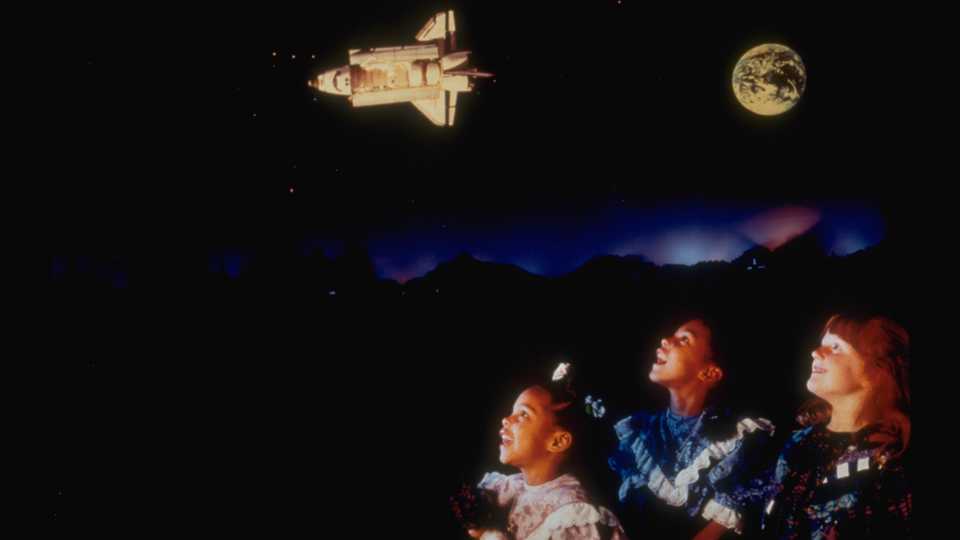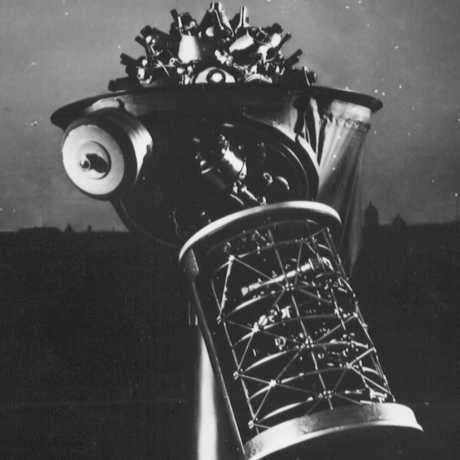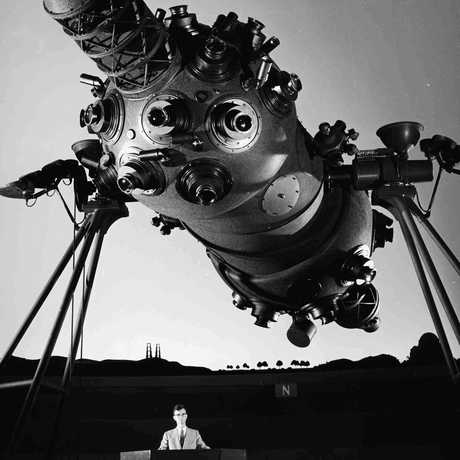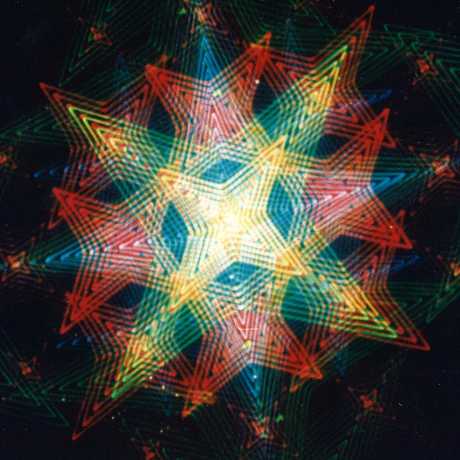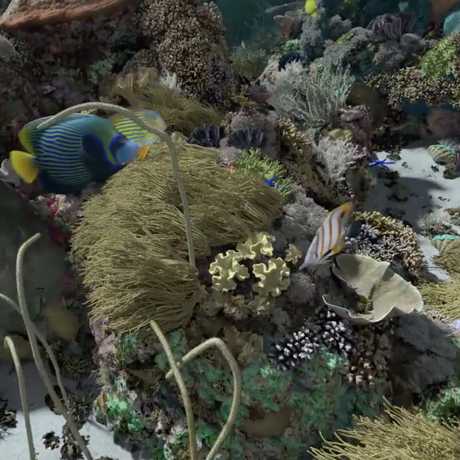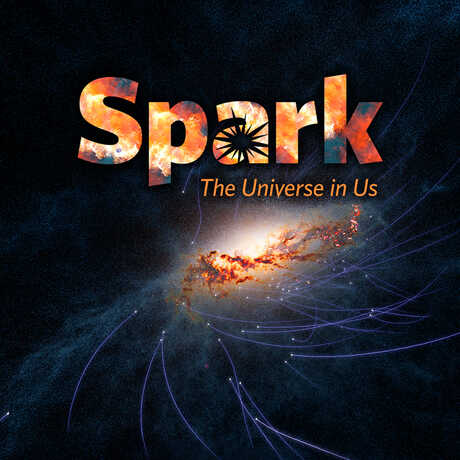It wasn’t long before more creative minds wanted to take fuller advantage of the planetarium environment, and in 1957, the world’s first psychedelic planetarium light show was presented at Morrison Planetarium. These were the Vortex concerts, and the name may sound familiar if you’re a NightLife regular, because we occasionally present Vortex 2.0, which is a modern homage to the original, using our digital fulldome system, featuring animations from various computer graphics artists.
The original Vortex featured electronic music—which in the ’50s didn’t sound like what we might call electronic music today (if you’re a fan of science fiction movies, think of the soundtrack to Forbidden Planet). Thanks to the then-new medium of magnetic tape, there was a lot of playing around with sound effects such as reverb and loops.
Sound artist Henry Jacobs recognized that the original planetarium had speakers distributed along the dome, surrounding the audience, and he used a hand-crank that could direct pre-recorded audio to any speaker he wanted. With it, he could make the sound circle dizzyingly around the audience, creating a “vortex” of sound (hence the name).
Accompanying Jacobs’s soundscapes were abstract visuals created by filmmaker Jordan Belson, operating up to 30 different slide projectors, kaleidoscopes, strobes, zooms, and Moiré pattern projectors, producing a sound-and-light environment unlike anything seen before—and the forerunner of all trippy light shows and music visualization experiences that followed and which continue today.
Vortex was presented in five short runs through 1959, and even went outside the U.S. to Belgium and Canada. Ultimately, though, while audiences and critics liked it, the museum administration decided that Vortex attracted the “wrong kind of crowd”—beatniks and other people who were more interested in art than in science.
Vortex was briefly revived one more time in 1974, and was followed by the Northern California premiere of Laserium. It premiered in Los Angeles in 1973, then came to San Francisco the following year, running from 1974–1979 and 1983–2000, becoming a worldwide phenomenon that played in dozens of planetariums around the world and had many imitators. The name “Laserium” became the “Kleenex” or “Band-Aids” of the laser show industry, used by many as a generic term for any laser show.
Unlike the response to Vortex, the fact that Laserium attracted audiences that might not ordinarily visit science museums was eventually seen as a good thing, and in its heyday, Laserium was so popular that many people thought it was the only program Morrison Planetarium delivered. And what it did was to bring music visualizations to millions of visitors, with content ranging from classical to rock to jazz and new age and shows highlighting the music of Pink Floyd, Led Zeppelin, the Doors, the Beatles, the Police, and others—all under Morrison Planetarium’s starry sky, which provided the proper amount of “spaciness.” We’re often asked if we’re ever going to do laser shows again, but things aren’t as simple as they used to be, and doing so would be much more difficult, given the tilted configuration of the planetarium today.
